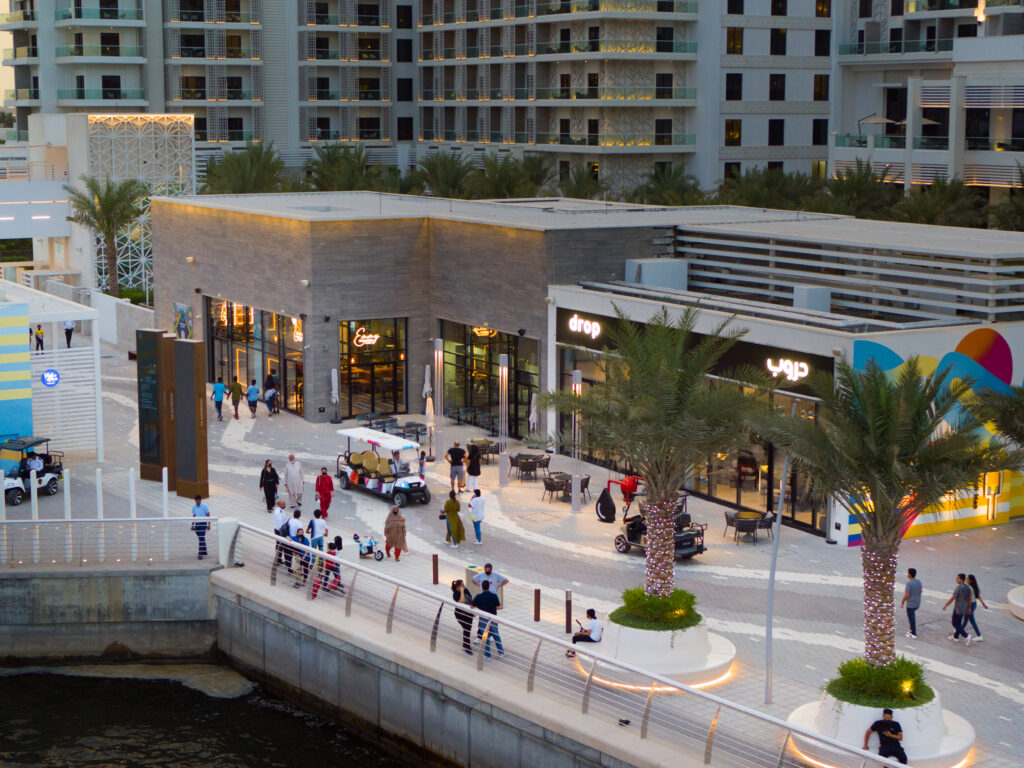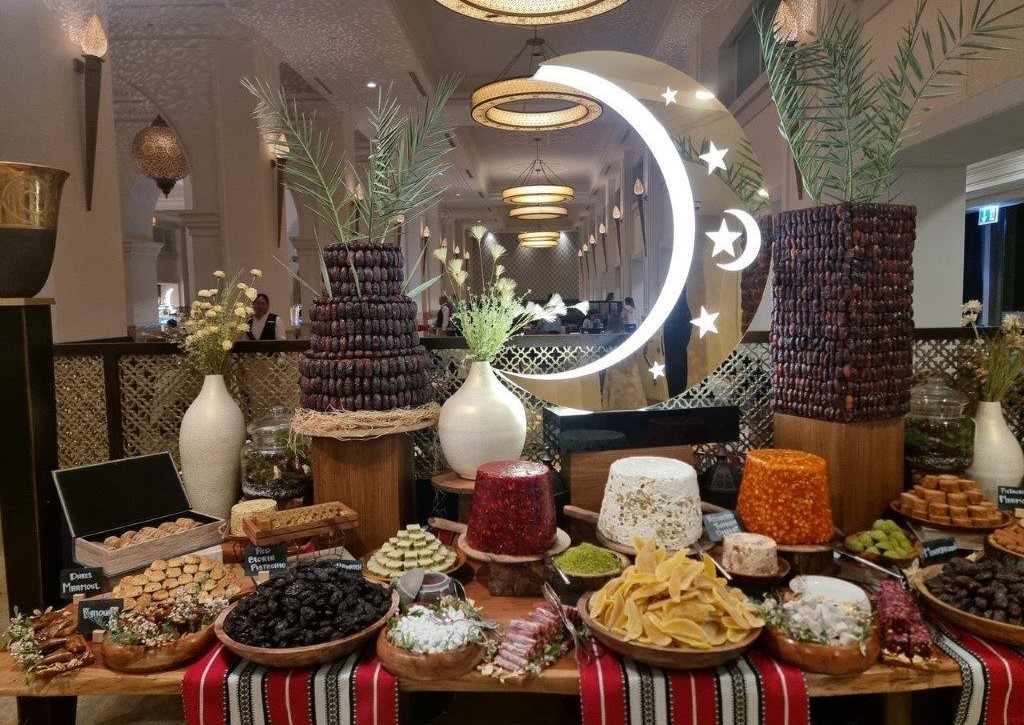Al Ain is a Gods gift to Abu Dhabi with all it has to offer and here are some of its greatest attractions.
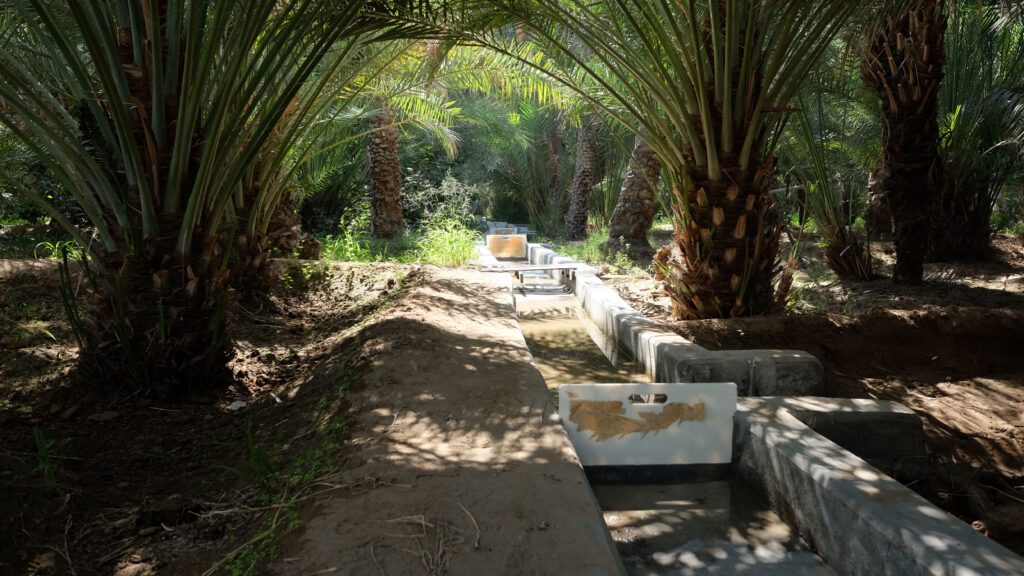
The oasis city of Al Ain has a dramatic setting, overlooked by the craggy mountain range of Jebel Hafeet. It’s a pretty and ordered town that is easy to get around and is popular with visiting families for its zoo and many relaxing public parks.
Historically, Al Ain has been settled since at least 3000 BC, and the museum here does a good job of tracing that long history. It’s this history that has made the Al Ain area the only site in the UAE to be inscribed on UNESCO’s World Heritage List.
Al Ain has something for everyone, form desert camping and high style Glamping to winding , twisty hill climb roads, mountains, parks and the list goes on.

Those with an adventurous streak will enjoy a drive trip up to Jebel Hafeet’s summit or a day spent among the wave pools and white water rafting facilities of Wadi Adventure waterpark.
Find out more about the best places to visit with our list of the top attractions in Al Ain.
Jebel Hafeet
The craggy contours of Jebel Hafeet rise up inland from Al Ain. If you’re looking for panoramic photos over the city and surrounding desert then a trip to the summit should be at the top of your sightseeing list. It’s approximately 56 kilometers from central Al Ain to the summit.

At 1,240 meters, this is the second highest peak in the United Arab Emirates (the highest is Jebel Jais in Ras Al Khaimah) and the highest in Abu Dhabi. The drive up here, following a winding mountain road, has plenty of scenic viewpoints, and from the summit, the entire region is spread out beneath you.
Jebel Hafit Desert Park
Occupying a nine-kilometer stretch at the base of the craggy Jebel Hafit mountain, Abu Dhabi’s tallest peak, visitors can explore the family-friendly park’s majestic natural surroundings on a hike, mountain bike, horse or camel and discover fascinating archaeological and historical remains that tell enchanting stories of this unique area’s ancient habitation.

Archaeological remains include remnants of the Neolithic period from 8,000 years ago, to the 5,000-year-old Jebel Hafit Tombs excavated in 1959 at the request of the late Sheikh Zayed bin Sultan Al Nahyan, Founding Father of the United Arab Emirates.
Al Ain Zoo
Opened in 1969, Al Ain Zoo is the United Arab Emirates’ largest zoo. Endemic mammals such as the Arabian antelope and Arabian oryx can be seen, as well as African gazelles, giraffes, and eland.
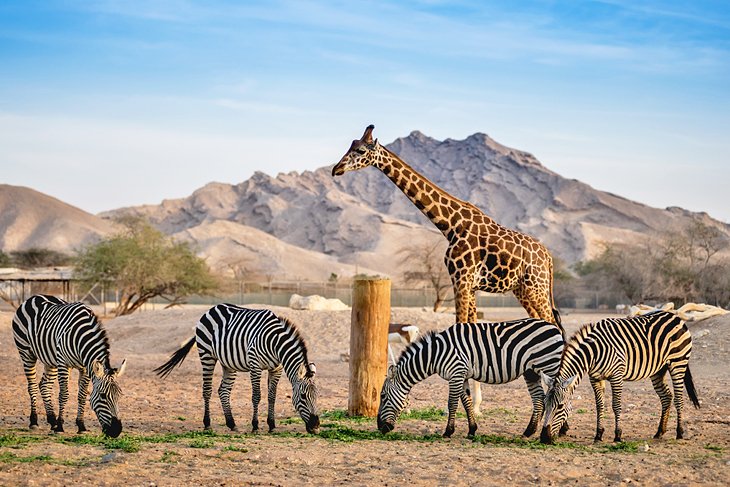
The big cat enclosures feature lions, tigers, pumas, black and spotted leopards, and jaguars. There is also a monkey compound, aviary section, and reptile house.
The zoo is famous for its research facilities, particularly the breeding program for endangered native animals, with more than 30 percent of the species that can be seen here currently on the endangered list.

The zoo’s latest venture is the Al Ain Safari, a 217-hectare extension, where African and Arabian Gulf animals (including some critically endangered species) live in a more natural environment. Visiting this section of the zoo is by jeep or truck tour only.
Al-Jahili Fort
This much restored fortress, surrounded by some tranquil, shaded gardens in the central city, dates back to 1891 and was once an important defensive feature protecting the town from attack.

Today, it’s one of Al Ain’s major points of interest, and inside its stocky golden-bricked bulk, you’ll find an exhibit devoted to photographs depicting the life and work of British adventurer, desert explorer, and writer Wilfred Thesiger, with a particular focus on his journeys into the Empty Quarter during the 1940s.
Al Ain Oasis
A tranquil respite from the hot sun, and a refreshingly natural diversion from the city streets, Al Ain Oasis is a vast series of date palm plantations linked by footpaths right in the heart of the city.
A small museum near the main entrance does a good job of explaining the importance of date palms to traditional life, while the oasis itself contains nearly 150,000 date palm trees.

The palm groves are still fed by water channels using the traditional falaj irrigation system, which has been in use in the United Arab Emirates for 3,000 years.

This is a great option for anyone seeking some downtime and a relaxing stroll. Horse rides and buggy ride tours of the oasis are available at the main entrance.
Al Ain National Museum
The Al Ain National Museum, housed in the Sultan Bin Zayed Fort, does a good job of bringing the heritage, culture, and history of the United Arab Emirates alive.
There is a particularly interesting ethnographic section reflecting the daily life of the region’s people, with a reconstructed traditional majlis and exhibits of traditional garments and Bedouin jewelry.
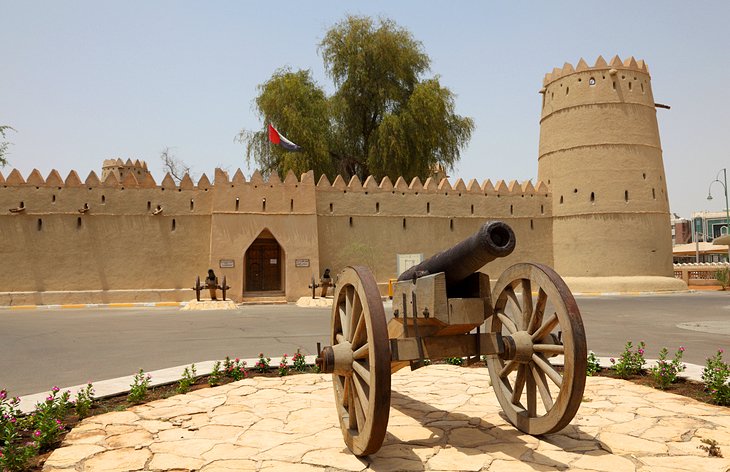
In the archaeological section are displays of local artifact discoveries that date back to the Bronze and Iron Ages, including pendants and an important coin collection.
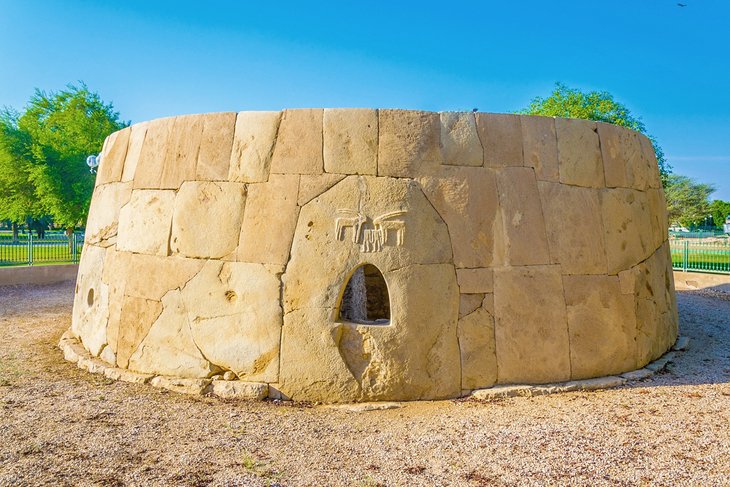
The main attraction of this section, though, are the exhibits from the nearby Hili Archaeological Park, including the restored Grand Hili tomb unearthed at the site.
Qasr al Muwaiji
This fort has been recently restored to its former glory and offers a good chance to appreciate Emirati fortification architecture. It was built during the early years of the 20th century and was the birthplace of Sheikh Zayed bin Sultan and the family home.

Inside, as well as admiring the building itself, you can visit a small museum dedicated to the history of the fort and the people who lived there.
Green Mubazzarah Park
At the foot of Jebel Hafit, you’ll find Mubazzarah Park, an isolated spot of green amid the rocky and dry landscape. This natural oasis is a great place to relax and is especially pretty during sunset.
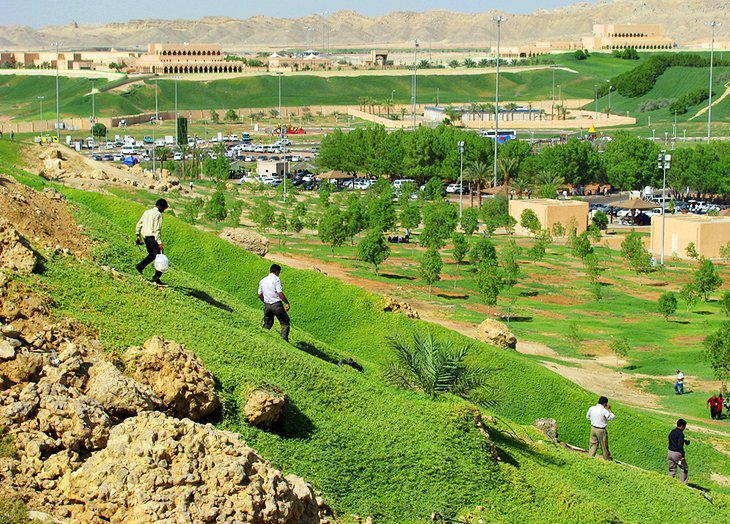
Its highlight is the natural mineral hot springs, which run through the park area in a series of pools. They’re a great place to soak away any travel aches and pains. On the weekends, the park is busy with picnicking local families.
Camel Market
Al Ain’s camel market is an excellent chance for travelers to experience a taste of traditional local culture. The market is a little stinky (unsurprisingly), but if you can handle the smell, a visit here is a truly fascinating experience that has yet to be trussed up for the tourists.
This is the last remaining camel market in the United Arab Emirates, and people from across the region head here to buy and sell.
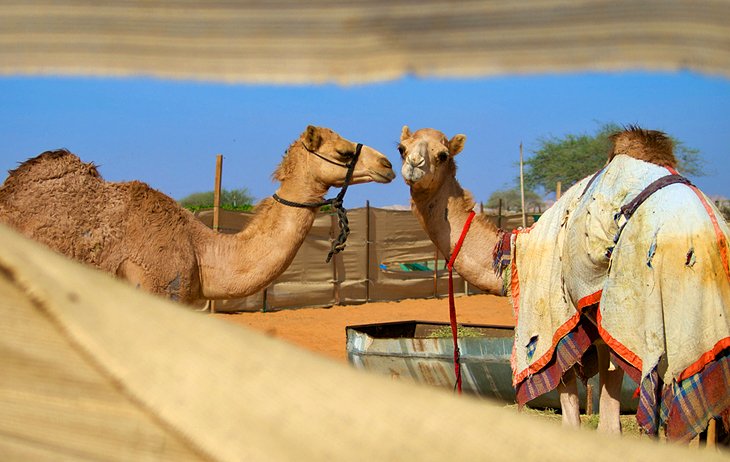
You are free to wander around at will and watch people bartering over the camels; don’t take any notice of men who may approach you on entering and insist that you need a guide.
Public Gardens
Nicknamed “garden city,” Al Ain lives up to its reputation. Throughout the area, you’ll find lush greenery, which contrasts vibrantly with the dry and parched desert surroundings. Many public gardens and parks offer welcome shade on long, hot summer days.
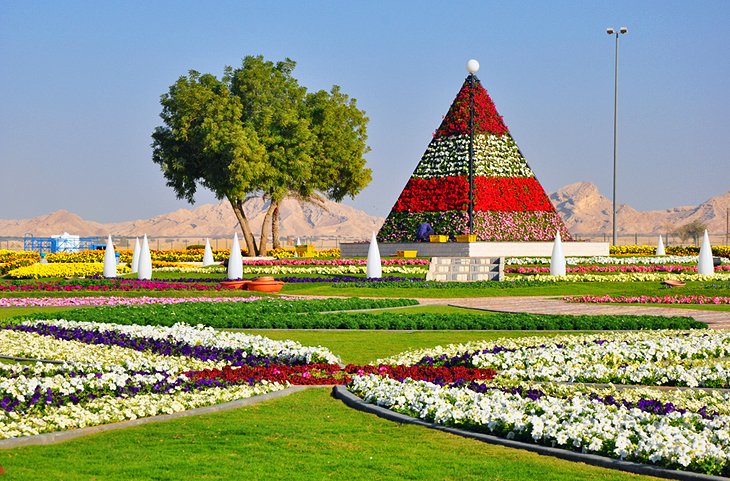
Several are endowed with weird (and slightly over-the-top) landscaping elements, impressive fountains with lighting displays at night, and playground facilities for children. The Central Public Garden in the center of town is one of the best for a stroll.
Camel Racing
Camel racing has taken place in the United Arab Emirates for centuries, and the large 10-kilometer track at Al Ain hosts regular races. Watching the racing is a rare opportunity to see a slice of traditional Emirati culture, which has not faded away as the high-rises rose.

If you happen to be in town when the racing is on, it shouldn’t be missed. Certain breeds of camel are used for racing due to their slender size, including the white or golden “Anafi” breed and the brown or black “Boushahri” breed.




